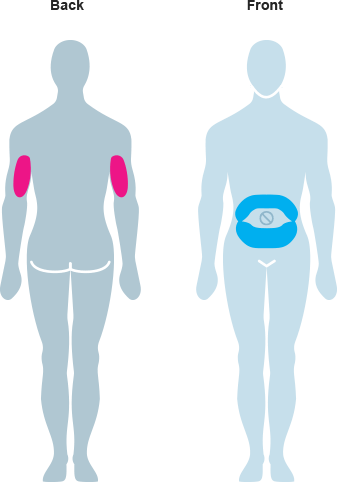SUSTOL can provide a full 5 days of chemotherapy-induced nausea and vomiting (CINV) protection to help support you and keep you on track during your treatment.1
Treatment with SUSTOL
- Your healthcare provider will inject SUSTOL under the skin of the back of your upper arm or your abdomen (lower stomach)1
- For each treatment, you will receive an injection at a different location in the same general area of your body2
- You may have some bruising, bleeding, swelling, pain and tenderness, or small bumps at your injection site—bruising and swelling can happen up to 2 weeks or more after your injection1
Side effects you may experience
While taking SUSTOL, you may experience side effects, including, but not limited to:
- A reaction at the part of your body where SUSTOL was injected, such as infection, bruising, swelling that is caused by blood that collects under the skin, bleeding, pain, tenderness, or small bumps1
- Problems with bowel movement, known as constipation. Constipation can happen up to 7 days after treatment with SUSTOL1

Tell your healthcare provider if you have:
- Pain or tenderness that you need to take pain medicine for, or if you have pain that interferes with your daily activity1
- Bruising or a bump at the injection site that does not go away1
Call your healthcare provider right away if you have:
- Signs of an infection at the injection site, including continued redness or warmth, or if you have a fever1
- Bleeding at the injection site that is severe or lasts longer than 24 hours1
It is also important to know you should not use SUSTOL if you are allergic to granisetron, any of the ingredients in SUSTOL, or any other medicine of this type (5-HT3s) used to help prevent nausea and vomiting.1
Before receiving SUSTOL, inform your healthcare provider about medical conditions, such as kidney problems. Tell your healthcare provider about all the medicines you take, including prescriptions, over-the-counter medicines, vitamins, and herbal supplements.1


